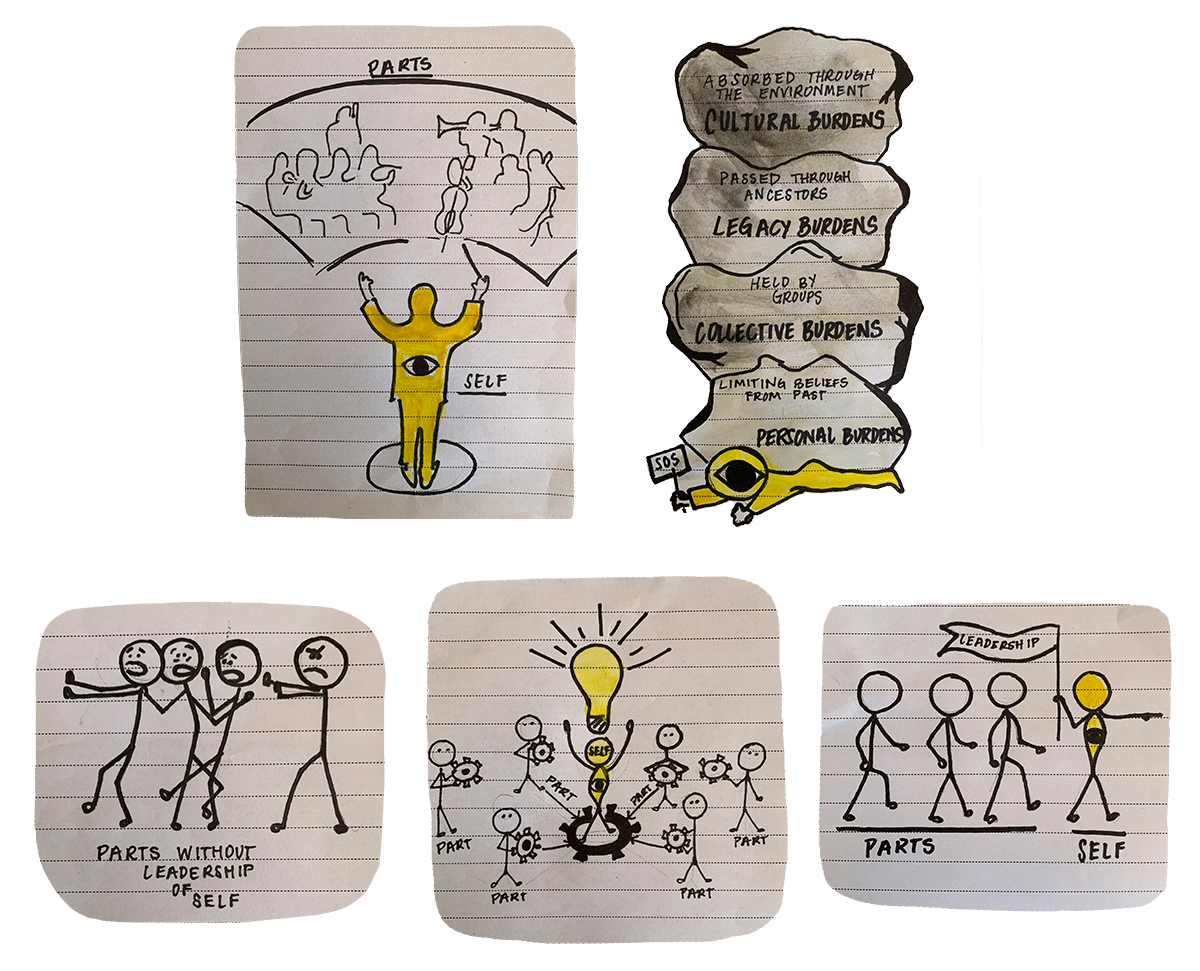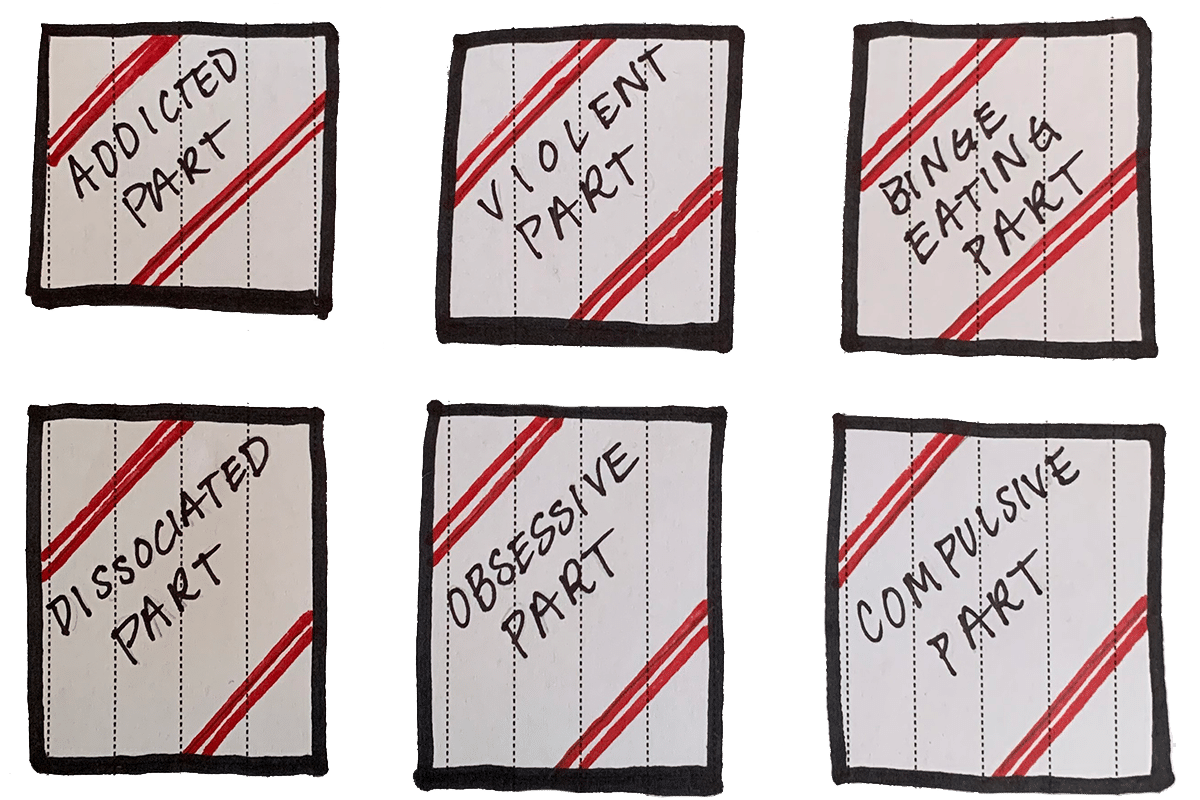
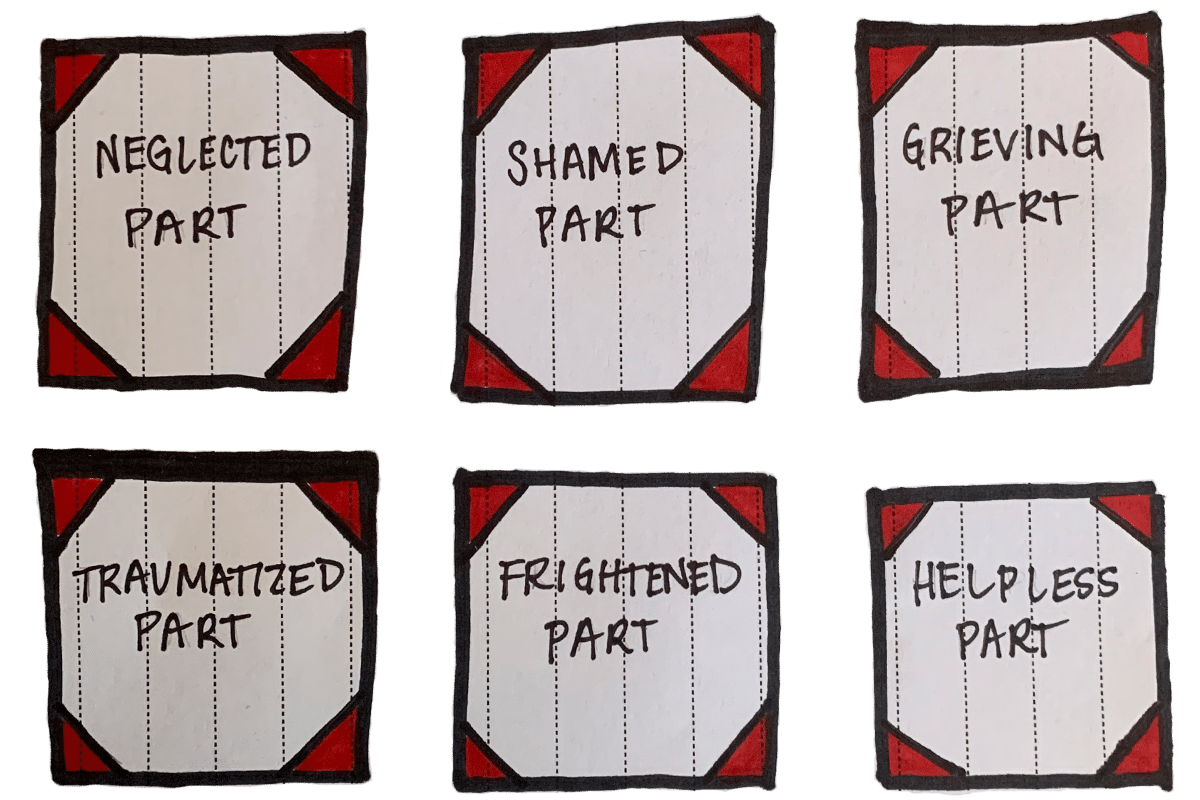
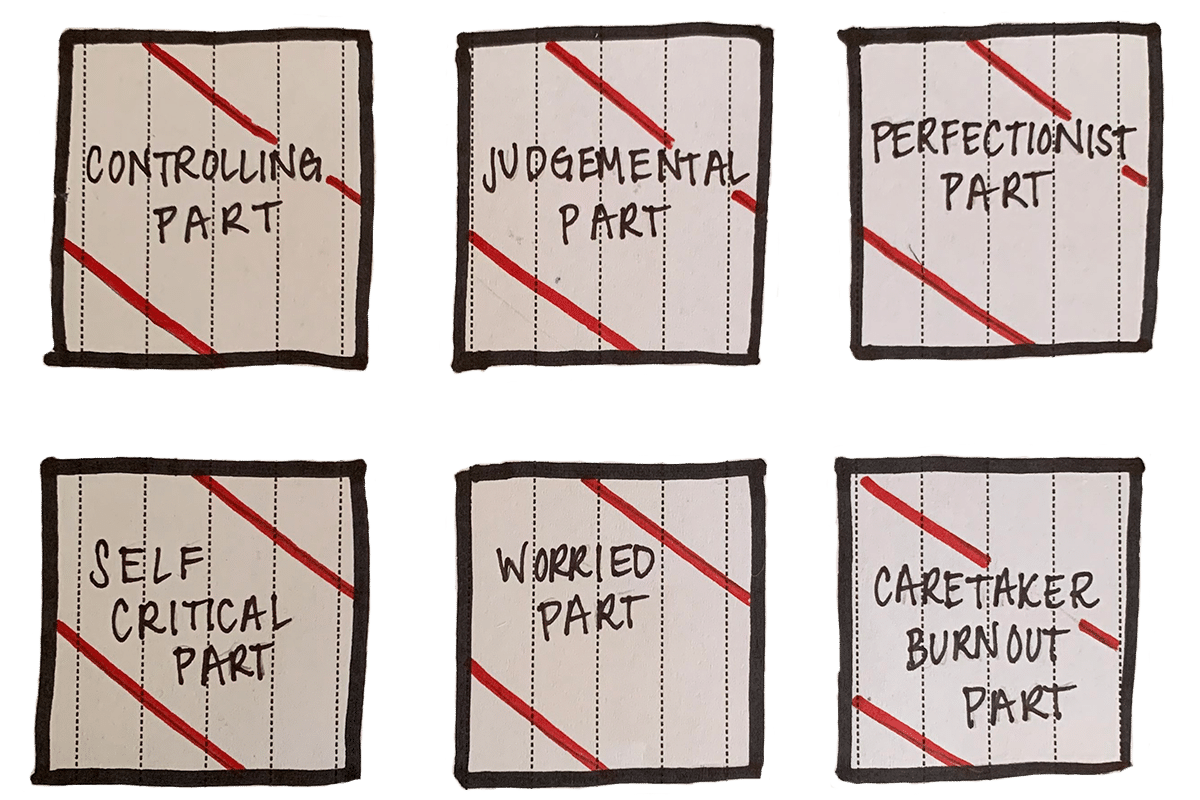
Yes, but...
Anything that isn't serving you has a positive intention to protect and manage your system against pain.
It's not you...It is only a part of you.
So... You're telling me that my (anxiety / depression / perfectionism, etc.) has a positive intention?
Yes. There are no bad parts, only parts that have developed strategies to survive, connect, and belong.
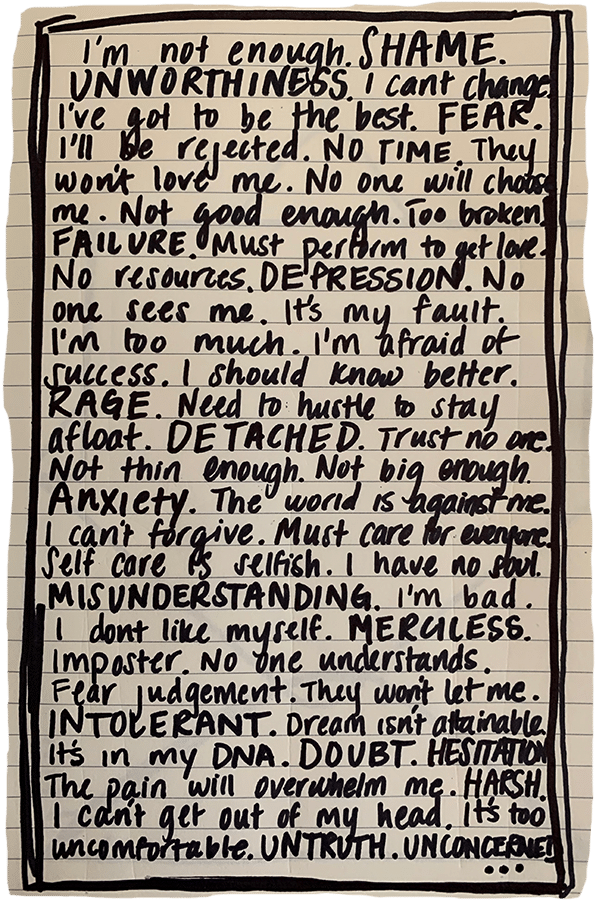
Hmm, okay, where do these parts come from? What happened?
Some parts may sound like this...
I’m not enough, I’m too much, I can’t do anything right! I feel unlovable, I have no control, I can’t get out of my head, I feel stuck...
Some parts may feel like this...
- Rejected
- Wounded
- Traumatized
- Not good enough
- Too much
- Bad
- Abandoned
- Dependent
- Shamed
Some parts behave like this...
- Self critical
- Controlling
- Judgemental
- Worried/Anxious
- Self-sabotaging
- Procrastinating
- Overachieving/Perfectionist
- Over-caretaking
- People pleasing
- Non-confrontational
Or like this!
- Reactive
- Numbing
- Angry/rageful
- Disordered eating part
- Compulsive shopping, scrolling, gaming
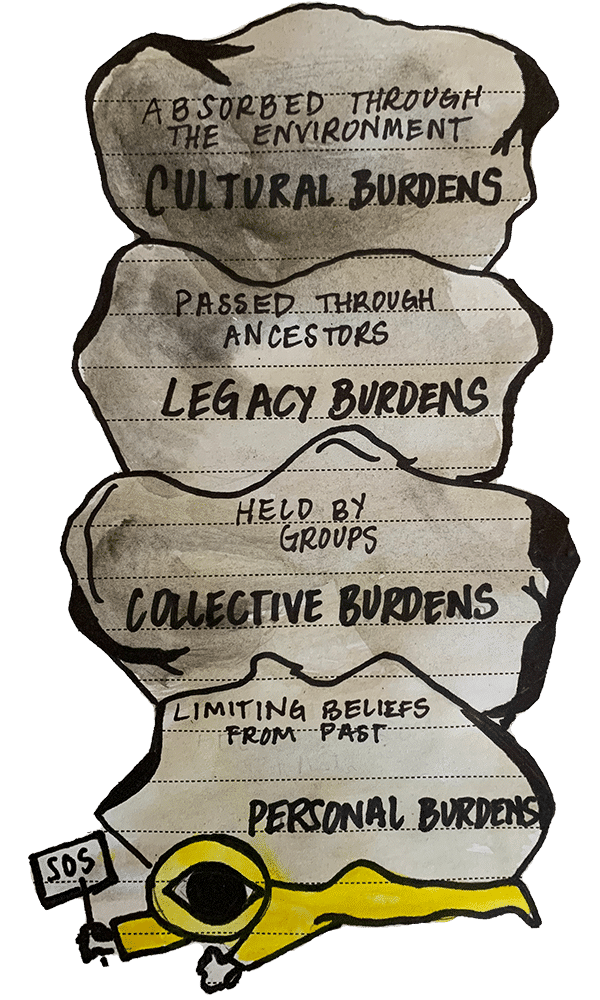
We are born into an atmosphere, simply taking in what’s around us. We all breathe air… unfortunately, some of that is radioactive garbage!
Our parents, our parents’ parents, and their parents’ parents…
Organizations, groups and societies. In reality, collective responsibility could be both collective guilt as well as collectible honor…
Survival strategies developed to cope with trauma, management of the wounds that have not been fully healed…
The Self
In Internal Family Systems (IFS), The Self is the inner source of healing. It’s who we are at our core, beneath the pain, the patterns, the protective strategies. When we’re not being hijacked by fear, shame, or self-criticism, we can access this calm, grounded place within us. The Self is the steady center from which we can observe, listen, and respond with clarity and compassion.
Psychologist Dr. Richard Schwartz, who developed IFS, identified eight core qualities of the Self—often called the 8 C’s:
Curious, Compassionate, Calm, Confident, Courageous, Connected, Clear, and Creative.
The Self is not just a trait, it’s a state of consciousness we can return to again and again. It becomes the lens we use to gently inquire into our inner world, to understand the parts of us that may be in pain, reactive, or out of balance.
You can think of the Self as:
- The conductor of the orchestra, ensuring harmony among all the different instruments (parts).
- The captain of the ship, steering with presence even when the waters are choppy.
- The CEO of the system, leading not with force, but with wisdom and care.
When we meet our reactive parts—like the inner critic, the people-pleaser, the avoider, through the Self, healing becomes possible. From this place, we can:
- Ask revealing and compassionate questions
- Engage in experiential inner dialogues
- Offer attention that is wise, grounded, and non-judgmental
And it is through this relationship, with the Self leading the way, that parts begin to relax, transform, and integrate.
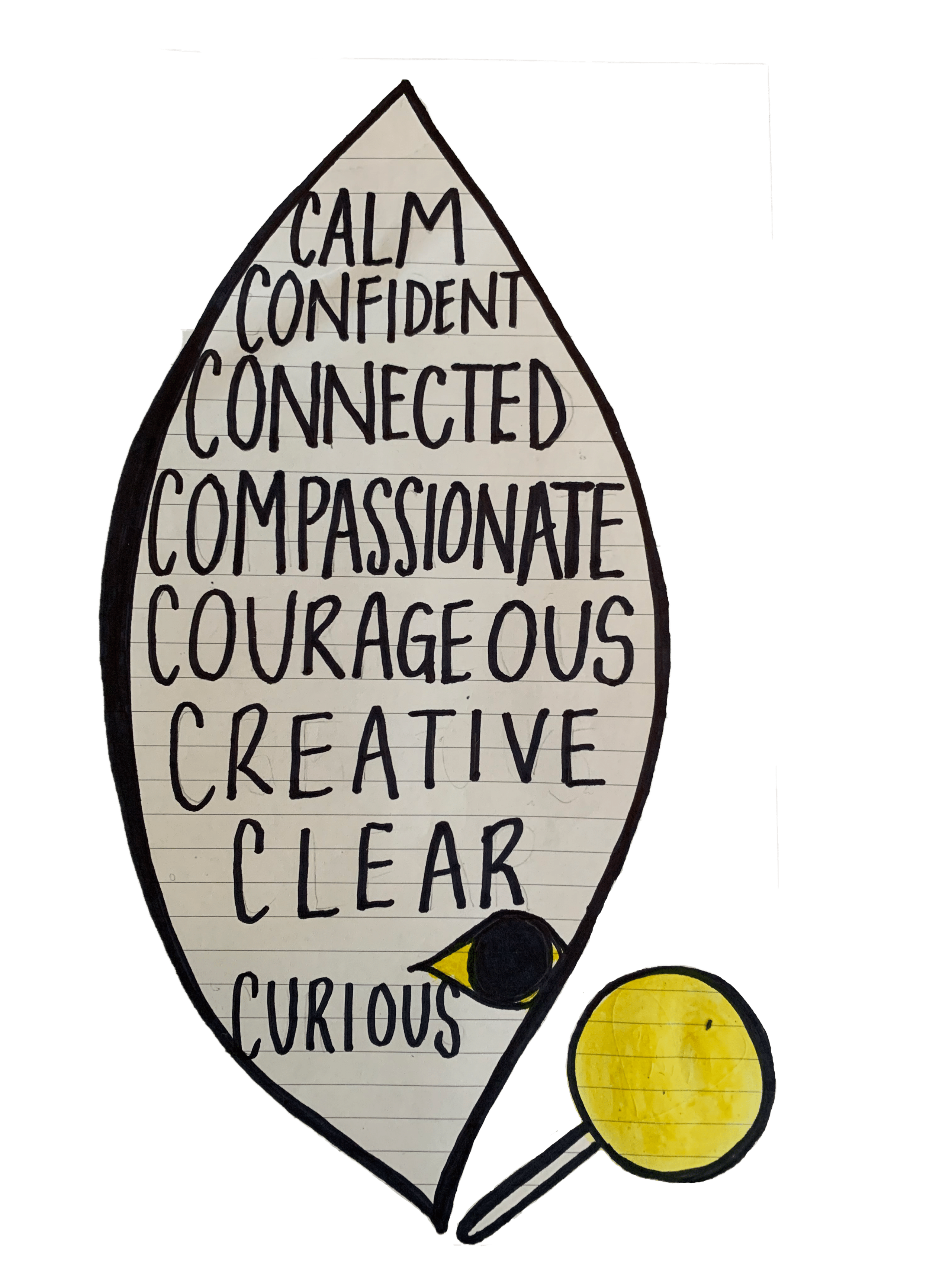
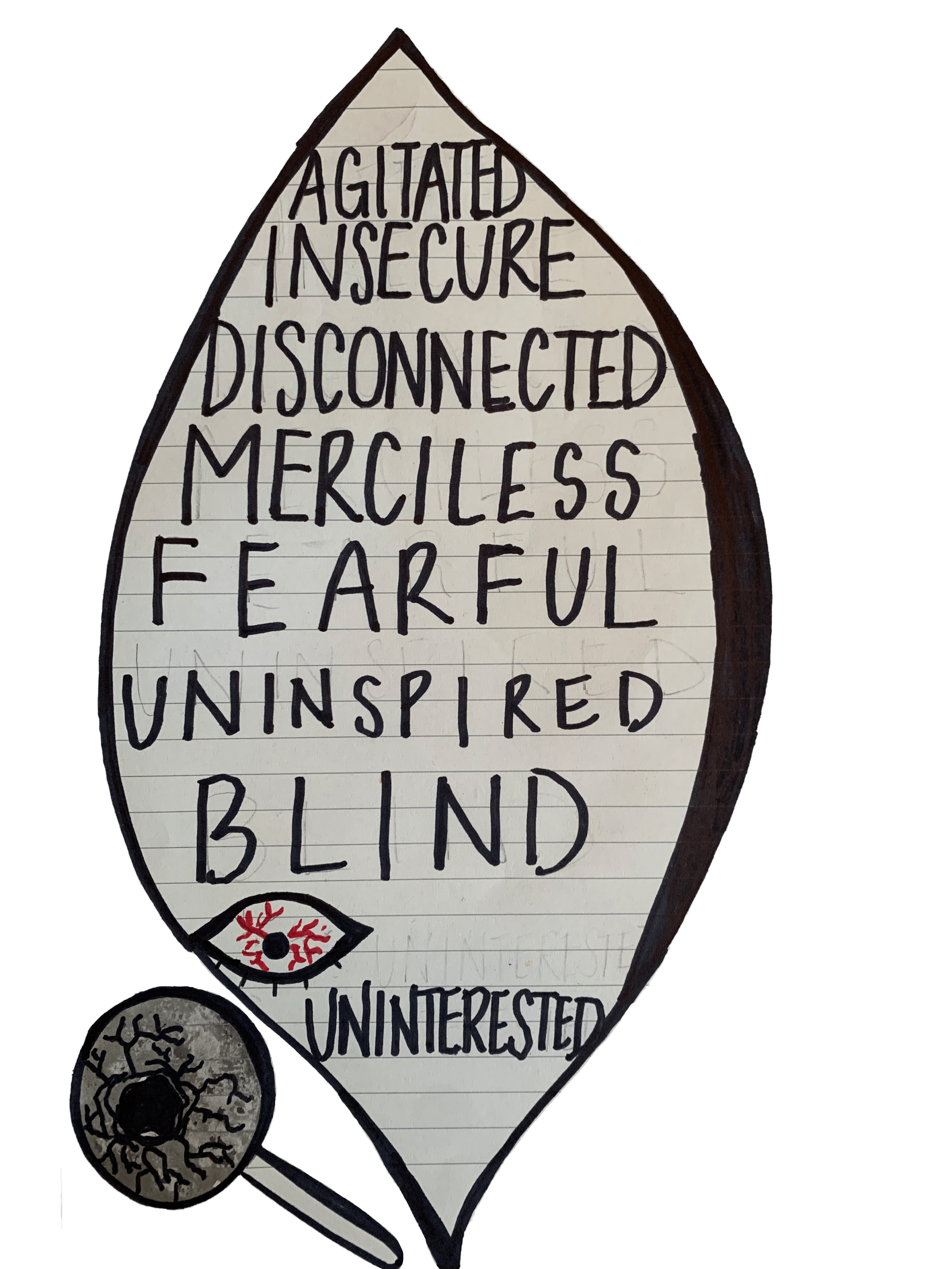
Psychological Rigidity
Psychological rigidity is our system’s attempt to avoid pain—emotional, mental, or existential—at all costs. It often shows up in subtle but persistent ways:
Avoidance Strategies
- Suppression and self-medication: Denying pain through substances, distractions, or numbing.
- Rumination and worry: Disappearing into thoughts in an effort to “solve” feelings.
- Fantasy or overworking: Escaping into idealized futures or endless busyness.
- Picking fights: Using conflict to avoid intimacy and vulnerability.
- Mindless self-stimulation: Scrolling, snacking, shopping—filling space to avoid discomfort.
Mental Storytelling
- Believing damaging stories about:
- Your pain: “This will never get better.”
- Your abilities: “I’m not good enough.”
- Others: “People can’t be trusted.”
- The world: “It’s too broken to fix.”
- Treating life as a problem to solve rather than a process to live.
- Thinking positive thoughts just to silence the negative ones, rather than relating to them with curiosity and compassion.
Internal Rejection
- Criticizing your feelings: “I shouldn’t feel this way.”
- Relating to emotions or impulses with disgust or shame.
- Fighting human impulses rather than exploring them—without labeling them as good or bad too quickly.
- Seeking elimination of difficult thoughts and feelings, instead of making space for them.
When Habit Becomes Identity
- Occasional avoidance becomes a lifestyle.
- The extra drink becomes dependency.
- Procrastination becomes abandonment of dreams.
- Toxic coping strategies whisper like old friends.
Parts Work: Understanding the Inner System
In the IFS model, our psyche is composed of parts, patterns of thought, emotion, behavior, and sensation that serve specific roles.
What Are Parts?
- Patterns we’ve followed since childhood, or developed in response to life’s challenges.
- Experienced through thoughts, feelings, urges, body sensations, and beliefs.
- No part is bad. Some are just extreme, reactive, or burdened.
All Parts Have Positive Intentions
Every part exists to protect us or manage pain. Even the parts that look self-destructive are trying, in their own way, to help us survive.
- They guard against:
- Rejection
- Shame
- Past trauma
- Emotional overwhelm
Parts as Inner Beings
You can relate to parts as though they were people inside you with their own:
- Desires
- Fears
- Definitions of happiness
- Strategies for survival
Sometimes these parts disagree, pulling us in different directions. Healing comes when we learn to listen to them all with compassion and curiosity.
